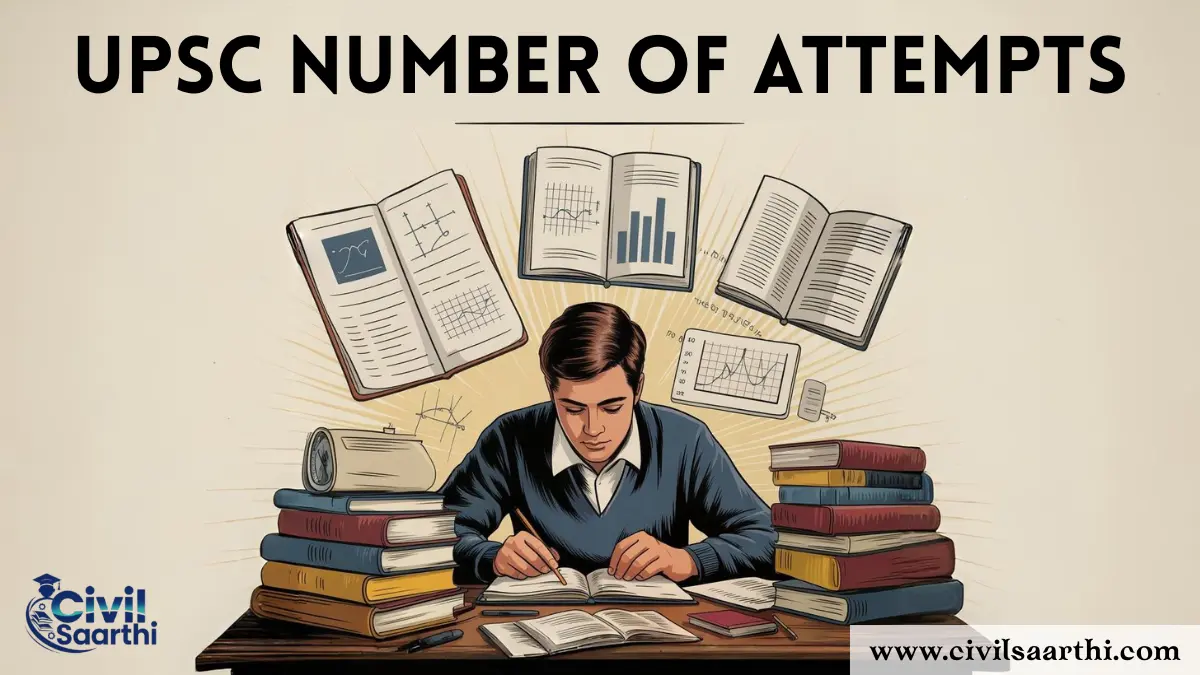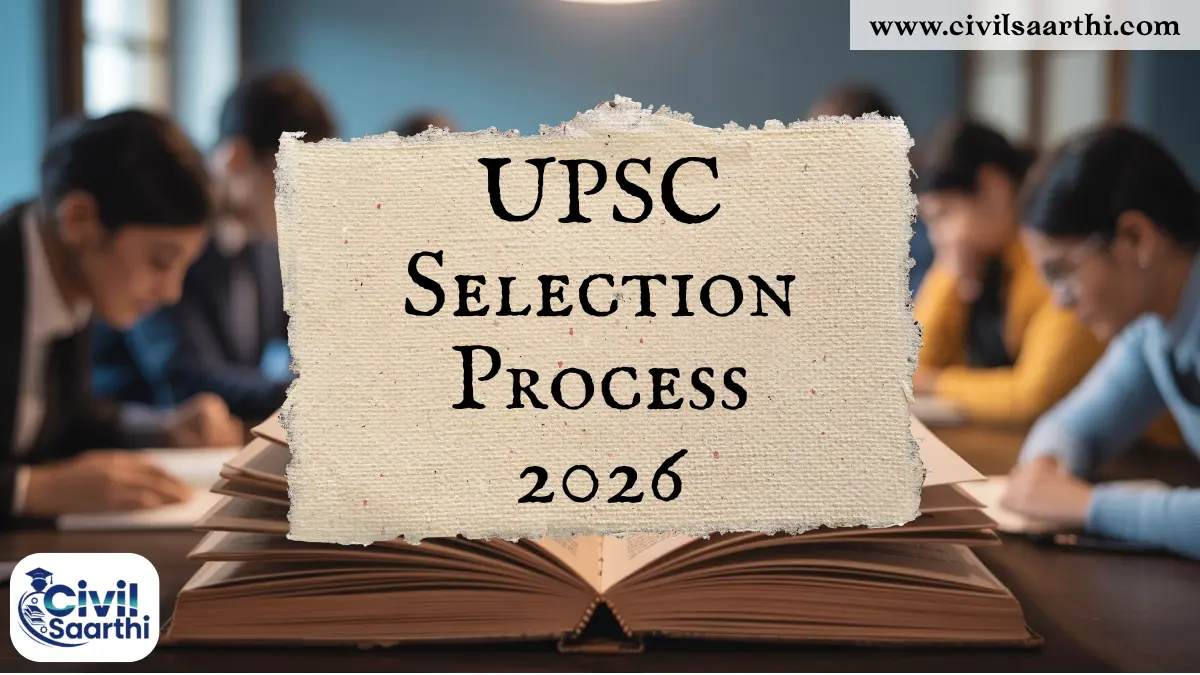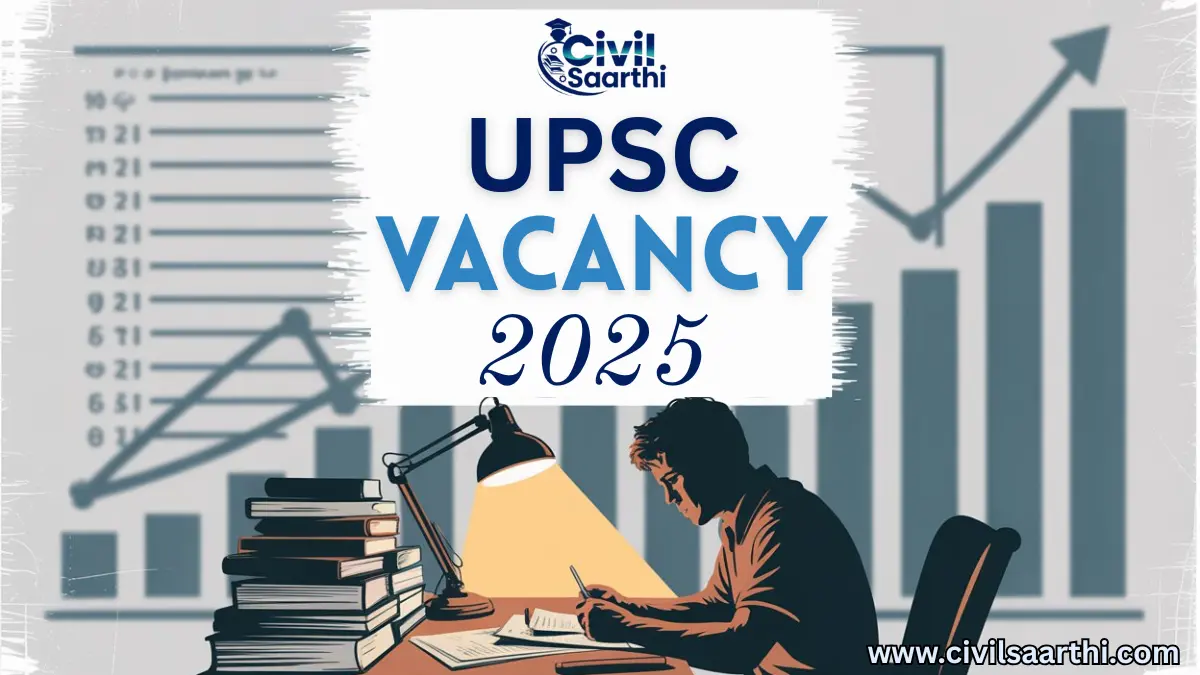The Union Public Service Commission (UPSC) conducts the Civil Services Examination (CSE) each year to select aspirants for India’s most elite administrative roles like IAS, IPS, and IFS. One of the most critical planning components for any aspirant is understanding the UPSC Number of Attempts. This defines the timeframe of your dream. For lakhs of aspirants, a deep understanding of eligibility and attempt limits shapes their strategy, confidence, and long-term outlook.
UPSC Number of Attempts
The UPSC Number of Attempts defines your timeline, strategy, and preparation discipline. Whether you’re in your early 20s or nearing your last eligible year, smart planning and avoiding careless attempts can make the difference. Success in UPSC isn’t just about how many chances you get, but how wisely you use each one
UPSC Number of Attempts Overview
The UPSC Number of Attempts directly determines how many chances a candidate gets at this competitive exam, irrespective of their preparation level. This count varies by category and also depends on age criteria, which is strictly enforced by the commission.
UPSC Number of Attempts Overview | ||||
| Number of Attempt | Age Limit | |||
| Category | No. of Attempts | Minimum | Maximum | Age Relaxation |
| General | 6 | 21 years | 32 years | No |
| EWS (Economically Weaker Section) | 6 | 21 years | 32 years | No |
| OBC (Other Backward Classes) | 9 | 21 years | 35 years | 3 years |
| SC/ST (Scheduled Castes/Tribes) | Unlimited (until age limit) | 21 years | 37 years | 5 years |
| PwBD (General/EWS) | 9 | 21 years | 42 years | 10 years |
| PwBD OBC | 9 | 21 years | 45 years | 13 years |
| PwBD (SC/ST) | Unlimited (until age limit) | 21 years | 47 years | 15 years |
UPSC Number of Attempts – General & EWS Category
General and EWS candidates are often the most competitive pool of aspirants. The UPSC Number of Attempts for these categories is capped at six. This limited number pushes many to begin their preparation early and aim to clear the exam in the first few attempts, keeping in mind that each year lost is precious.
UPSC Number of Attempts – General & EWS Category | |
| Criteria | Details |
| Category | General / EWS |
| Attempt Limit | 6 |
| Maximum Age | 32 years |
UPSC Number of Attempts – OBC Category
Candidates under the OBC category enjoy both increased attempts and age relaxation. The UPSC Number of Attempts for them is nine, with a maximum age limit of 35 years. This provision helps bridge inequality and gives more chances to aspirants facing socio-economic barriers.
UPSC Number of Attempts – OBC Category | |
| Criteria | Details |
| Category | OBC |
| Attempt Limit | 9 |
| Maximum Age | 35 years |
UPSC Number of Attempts – SC/ST Category
SC/ST aspirants receive one of the most relaxed eligibility frameworks. The UPSC Number of Attempts is unlimited up to the age of 37 years. While this sounds advantageous, effective planning and smart attempt strategy are still key.
UPSC Number of Attempts – SC/ST Category | |
| Criteria | Details |
| Category | SC/ST |
| Attempt Limit | Unlimited |
| Maximum Age | 37 years |
UPSC Number of Attempts – PwBD Candidates
Persons with Benchmark Disabilities (PwBD) are provided attempts based on their social category, with extended age relaxations. The UPSC Number of Attempts policy ensures inclusivity without compromising on fairness.
UPSC Number of Attempts – PwBD Candidates | ||
| Category | Attempt Limit | Maximum Age |
| PwBD (General/OBC) | 9 | 42 years |
| PwBD (SC/ST) | Unlimited | 47 years |
How UPSC Counts an Attempt
It is extremely important for aspirants to understand what actually qualifies as an attempt in the eyes of UPSC. A common misconception is that applying for the exam without appearing is counted, which is incorrect. According to official rules, only when a candidate sits for any paper in the Preliminary Examination does it count as an attempt. This clarity can help aspirants preserve their limited chances and prepare more strategically.
How UPSC Counts an Attempt | |
| Condition | Counts as Attempt? |
| Applied but did not appear in Prelims | No |
| Appeared for any paper of the Preliminary Exam | Yes |
| Appeared only for Mains after clearing Prelims | Already counted |
UPSC Number of Attempts – Real-Life Impact Scenarios
The UPSC Number of Attempts can significantly influence an aspirant’s preparation strategy. With limited chances, each attempt becomes crucial and must be planned carefully. Real-life examples help highlight how these limits affect actual career paths and outcomes.
UPSC Number of Attempts – Real-Life Impact Scenarios | |
| Scenario | Outcome |
| Candidate appeared for Prelims twice but cleared neither | 2 attempts used |
| Candidate applied thrice, appeared only once | 1 attempt counted |
| SC category candidate failed Prelims 5 times | Still eligible due to unlimited tries |
UPSC Number of Attempts – Mistakes That Waste Attempts
Many aspirants unknowingly squander valuable attempts by rushing into the UPSC exam without adequate preparation or by underestimating its vast syllabus and complexity. Such mistakes not only waste precious chances but also delay overall success. To make the most of your UPSC Number of Attempts, it’s crucial to avoid common pitfalls and approach each attempt with full readiness and strategy. Careful planning can ensure every attempt brings you closer to your goal.
- Attempting the Prelims without full preparation
- Not analyzing previous mistakes and repeating them
- Taking mock tests only after notification release
- Ignoring CSAT (which can eliminate you in Prelims)
FAQs on UPSC Number of Attempts
Does applying for the exam count as an attempt?
No, only appearing in any of the Preliminary Exam papers is considered an attempt.
How many attempts do SC/ST candidates get?
Unlimited attempts up to the age limit of 37 years.
Can PwBD candidates avail additional attempts?
Yes. General and OBC PwBD candidates get 9 attempts, and SC/ST PwBD candidates get unlimited attempts.
What is the age limit for OBC candidates?
The upper age limit for OBC candidates is 35 years.
What if I miss the exam after applying?
It will not be considered an attempt unless you appear for any paper of the Prelims.







